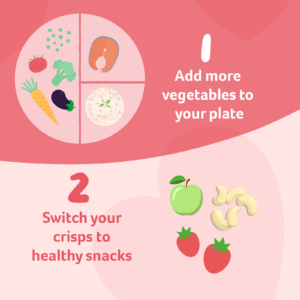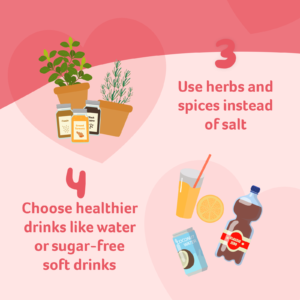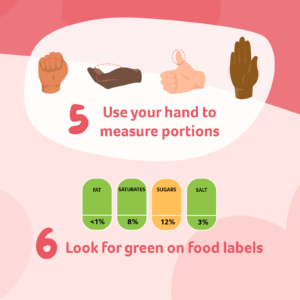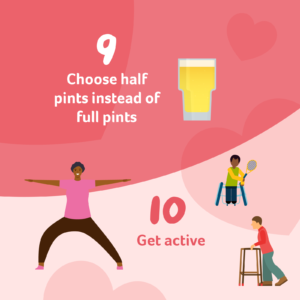Top 10 Tips for a Healthy Heart

It’s Healthy Heart Month and we’re sharing some tips on how to look after your heart! The heart is a muscle that beats around 100,000 times a day! It is a very important organ because it pumps oxygen and blood around the body. Here are just a few small changes you can make to your diet and lifestyle to make sure your heart health is the best it can be.
- Eat more veg – Did you know a low-fat, high-fibre diet is the best way to keep your heart healthy? This means it should include plenty of fruit and vegetables. When you’re preparing a meal, think about adding more vegetables to your plate. You could reward yourself with a treat after you’ve eaten your five portions!
- Healthy snacks – Add good unsaturated fats into your diet, helping to lower your cholesterol level. Switch your crisps to healthier snacks like unsalted nuts and seeds, peanut butter and apple slices, or blueberries and low-fat yoghurt. To keep your heart healthy, your snacks can still be tasty!
- Eat less salt – It can be really tempting to buy salty foods or add a lot of salt while cooking, but too much salt can raise your blood pressure. Salt is already in a lot of the food we buy including olives, crisps, bread, sauces, pickles and processed meats. You can try swapping salt for herbs and spices instead to make sure your meals are flavoursome.
- Drink water – Choose healthier drinks like water or sugar-free soft drinks to improve your heart health. Water is the best choice because it is inexpensive and sugar-free. According to research, drinking more water keeps sodium levels down, and that can reduce pressure on the heart. If you want to give it some flavour without adding sugar, try adding ice cubes and fresh mint or cucumber.
- Measure portions – Did you know you can use your hand to measure your food portions? For example, the nail of the thumb is about one teaspoon serving of oils or fats. To read more about how to use your hand to measure your food, visit the British Heart Foundation website.
- Food labels – Look for green! A food that has all or mostly green on the label is a healthier choice. Amber means you can eat these foods most of the time. Red means the food is high in saturated fat, salt or sugars, and you should try to eat a smaller amount of these.

- Move more – Look for opportunities to move more. If you are able to stand, make sure to get up and walk around at least once an hour. This is especially important if you sit at a desk for much of the day. You could set yourself small challenges. For example, you could try and make it a habit to stand up or move every time you take a phone call.
- Quit smoking – If you smoke, pick a date to quit. It may be difficult at times, but there is help available to you. Some pharmacies offer stop smoking programmes. They will be able to help you find the best way to stop smoking and suggest medication or nicotine replacement therapy. After a year of stopping smoking, your risk of heart disease is half that of a smoker!
- Drink less alcohol – When you stop drinking, or reduce the amount you drink, you’ll see improvement in your blood pressure which reduces strain on your heart. One way to to reduce alcohol intake is to choose half pints instead of full pints.
- Exercise – Being active can prevent a heart attack by reducing fat blockages in your arteries. It also helps improve your general wellbeing and sleep. Get into the routine of raising your heart rate by doing a ten minute online living room workout with no equipment needed, check out this British Heart Foundation video.
This month, we’re also running a challenge to encourage you to keep your heart healthy. If you complete three exercises in February, you can enter our prize draw where you will be in with a chance of winning a smart watch!




